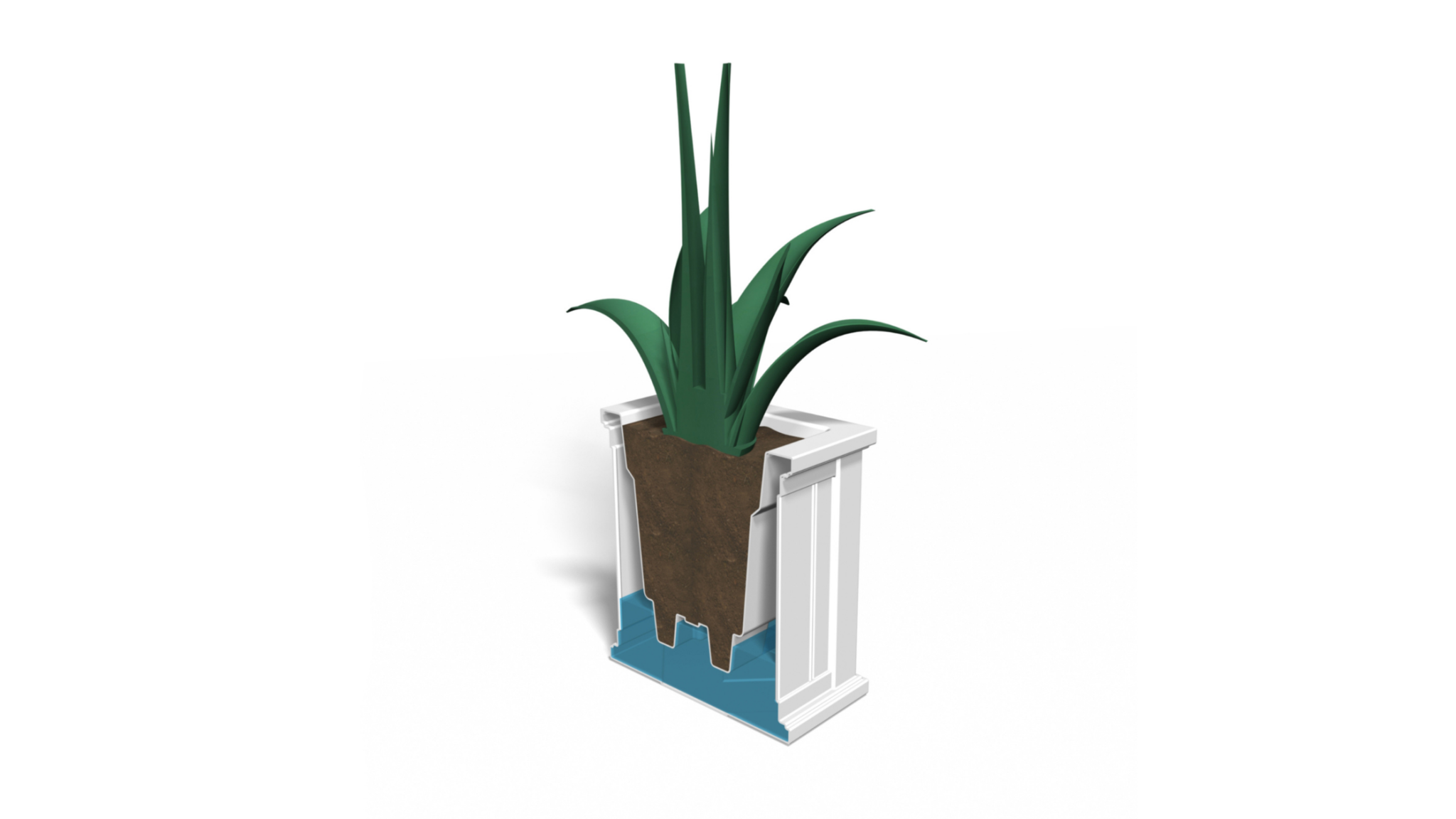A QUICK GUIDE TO SELF-WATERING PLANTERS – THE BEST GARDENING UPGRADE
Self-watering planters are a perfect addition to any space because they help solve a host of different issues involved with growing plants. Whether you are someone who is always on the go and might not have a lot of extra time to tend to your garden, or if you’re someone who lives in a place where the climate is constantly hot and dry – self-watering planters are your magic solution!
Contrary to popular belief, self-watering planters DON’T water themselves. Instead, these planters have a water reservoir underneath the planting area (or planting basin). This space collects all the excess water from the soil and stores it just below the plant – sort of like a little water tank.
Once the plant’s roots have had time to grow, they are able to draw up as much water as is needed from the water reservoir, through the process of osmosis. This keeps your plants happy and consistently hydrated without the hassle of daily watering.
A Formidable Self-Irrigation System:
Regular watering is still needed for the first couple of weeks after filling the planter. This gives the roots ample time to develop a resilient root system. With this reservoir system in place, you will find the potting mix stays moist longer than when using traditional planters. In the long run, just make sure that the water level in the water reservoir is maintained and you can completely move away from your regular watering schedule.
As an added feature, Mayne self-watering planters* come with an overflow drainage hole. With constant drainage, there is no way to overwater or flood your roots. So, you do not need to worry about root rot. Any excess water will just drain out so you can rest easy knowing your plants are well taken care of. As Mayne planters can be used both indoors and outdoors during all 4 seasons, these additional features ensure your plants are neither over-watered nor dehydrated all year round!


Self-watering Planters Best Practices:
- If you live in a colder climate, make sure you drain any excess water from the reservoir before winter hits. This ensures that the water doesn’t freeze within the planter, which might then lead to any bulging or damage to the planter itself.
- If you are going to be away from your planter for a few days, make sure you have direct access to the water reservoir and top up the water content as needed. Mayne planters have a double-wall design that allow you to drill a ¾ inch hole straight to the reservoir. (A rubber plug to cover this hole is included with all Mayne self-watering planters)
- Self-watering planters are great for plants like African Violets and Snake plants that are prone to fungal disease if their leaves get wet. Again, make sure that during the initial few weeks, the watering is done from above and then just directly water your plant using the built-in sub-irrigation system.
- This type of planter is not a good option for plants that do not thrive in constant moist conditions – think cacti and succulents. Understanding your plant’s unique requirements will help you in the decision-making process of choosing a planter.
Let’s be honest – container gardening can be tricky for both experienced and novice gardeners alike, given how inconsistent different plants’ needs are. For instance, watering your plants every other day for a week might work out fine, and the same regime on another week can totally drown your topsoil. This is exactly where self-watering planters’ step in, add some consistency and ensure you enjoy your plants for longer periods of time.
*Not all Mayne planters are self-watering – please refer to individual product specs for further clarity.


